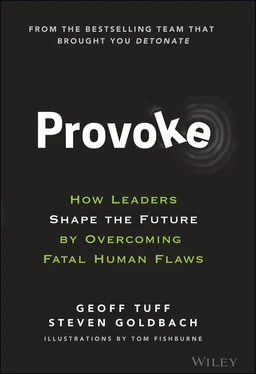Naturally, desirability is always relative: defined by the perspective of any individual consumer. Each has different tastes and might find different things attractive. Therefore, you should never (only) look at the market on an aggregate basis. Even with cord cutters, where the feature of being able to watch your shows when you want is better for all, that feature may be of more or less importance to different segments of the population. Especially in the early stages of a trend's appearance, “superusers” who are more willing to break longstanding habits to adopt a new behavior hold the key to understanding what the future might have in store.
Consider the launch of ride-hailing services. In markets like New York, where the existing taxi infrastructure didn't allow for calling a taxi, or consumers didn't find the experience clean, having the ability to hail a clean car from your phone at a similar price is unequivocally more desirable for the vast majority of consumers (granted a small minority just liked the yellow cab experience or took some comfort in the fact they were regulated). All the existing features are present with zero trade-off. However, other segments of the market might include significant trade-offs. In London, for instance, where taxi drivers are required to go through comprehensive training, there might be a trade-off on knowledgeability of the driver. 5Or in other markets where it was easy to phone for a taxi, the trade-off might have been less obvious. Therefore, it was quite predictable that ride hailing would take off quicker in markets with less attractive existing competition (other things being equal). The question was not “if” but “when.”
At this point, some readers may be wondering – “Wait, don't these if-to-when rollercoasters come in different sizes and shapes?” Absolutely: slopes vary, the height of the peaks vary, and the overall cycle time passing through the phase change from “if” to “when” varies as well. This additional dimension of “to what extent” a trend matters naturally leads to the question of how to know which early, weak signals to pay attention to. There is sadly no simple answer to this. The best provocateurs pay attention to all weak signals, at least to begin with. As a general rule of thumb, anything that has the possibility of impacting your foundational business model – or mission – should be paid particular attention to. For our Al Bundy executive, his business model was predicated on bundling multiple products to derive higher revenue from a stable customer base. Early on, he should have recognized that having that 1.75% segment – with customer buying behavior signaling desire for unbundling and less traditional product features – grow substantially could disrupt his whole growth system. The trick is to develop a method to pay keen attention to all early and/or weak signals and quickly assess their possible level of influence on your model for success. There will be some red herrings in the mix, for sure, but better in the early stages to set the aperture purposefully wide rather than to apply inadvertent blinders.
Many trends are complicated to consider because they aren't easily characterized by unequivocal desirability. Typically, a feature will be desirable for some but not others. Consider the market for e-readers. There were many predictions that e-readers would eventually dominate the market since their inception in the late 1990s. However, as of a few years ago, they only accounted for about 20% of all U.S. book sales according to the Association of American Publishers. Penetration outside of the United States is lower, with user penetration in Europe approximately 12.5% in 2021 according to Statista. As it turns out, the segment of customers who only consume content digitally is small – about 7% of U.S. adults according to Pew research. 6We might surmise that this segment might value portability, the ease to carry multiple books without adding weight, or values a lightweight reader (when compared to a new hardcover novel). Beyond weight, perhaps this segment might value searching, or carrying their entire library with them on the road. Our friend and colleague Maeghan Sulham (without whom this book wouldn't exist) reports that her family loves e-readers because they allow for reading in bed with the light off, meaning bed partners can sleep more easily.
Although there may be lots of benefits, this segment remains small, especially when compared to the 37% of readers, who according to Pew, read print books only . These consumers clearly don't care about weight, having a digital, searchable library, or reading with the lights out. Or if they do, they don't sufficiently care to change existing reading habits. Perhaps there are benefits only available in print books that they value above others – like the “feel,” or the ability to have a book signed by an author. This sort of desirability pattern is far more common, with opportunities being relevant to some consumers, but not others.
As markets mature, new entrants find ways to address desirability gaps in smaller and smaller proportions of the population – a typical industry evolution. The initial entrant effectively “creates” the industry with the advent of a new product or service that defines the market (and since they are the only competitor, they are the “average” as well). Then other competitors enter with slightly different features – a higher quality version for a higher price, or a lower quality version for a lower price. Over time, the market fragments with different offers to satisfy the various stages of the market until it is no longer economically feasible to serve these different segments. Typically, this is when we start to see consolidation. We are increasingly seeing this process of innovation, fragmentation, and consolidation happening faster and faster as consumer adoption through widely used channels, like mobile apps, can take place quickly.
In the food delivery space, we initially saw several different players in various markets around the world. In the United States, it started with GrubHub, SeamlessWeb (which became Seamless), and even the now “retro” MenuPages. Looking to capitalize on a growing market, we saw the entry of DoorDash, UberEats, Postmates, Caviar, and others. In Europe we had Takeaway.combased in the Netherlands and Just Eat in the UK, along with a variety of other services. Over time, this intensifying of competition has led to decreasing margins and more consumer choice. The decreasing margins in turn led to consolidation to find economies of scale. We have seen this over the last several years with the merger of Just Eat and Takeaway in Europe, which later purchased GrubHub (which had previously purchased Seamless). In late 2020, UberEats completed a multibillion-dollar deal to acquire Postmates. And DoorDash acquired Caviar, a service that specialized in upscale urban-area restaurants that do not typically deliver. A very fast consolidation indeed!
In Provoke we are going to focus primarily on the kinds of trends that define or redefine industries and secondarily on the trends that segment industries. Why? By definition, the trends that define or redefine industries are the trends with the biggest opportunity to improve lives for customers and society.
If desirability frames the potential opportunity, feasibility and viability are the governors of how fast it can happen. You may be able to identify many opportunities to improve the status quo, but you have to be able to bring them to fruition economically. Several barriers can stand between something that is clearly desirable but not ready for mainstream adoption. There are several categories of these barriers.
Behavioral feasibility sits at the intersection of desirability and feasibility. Probably the most important question of feasibility is whether or not customer behavior can be changed to accommodate the trend being evaluated. It's not enough to have a superior product or experience; that doesn't always win the day. Trying something new often involves breaking longstanding habits – some of the most powerful forces in the world of customer behavior. For example, while organizations have become more comfortable with the concept of remote working, it's not clear if the trend will accelerate or if employees will want to forgo their commutes entirely.
Читать дальше












